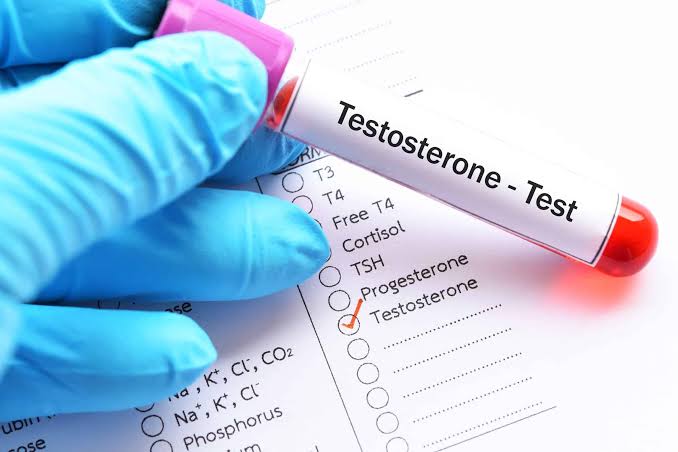
A testosterone test informs you about whether your testosterone levels are high, low, or normal. Your specific normal testosterone level will vary depending on your age and gender.
Testosterone is commonly referred to as a male hormone because males produce significant quantities of the hormone. Nevertheless, it is important to note that females also produce testosterone. Moreover, an imbalance of testosterone—either too much or too little- can lead to symptoms in both men and women. Only a testosterone test can gauge the hormone’s concentration in your body and ascertain if it falls within a healthy range. Keep reading to understand more about the testosterone test, typical levels for males and females, and the implications of high or low testosterone levels.
What Does a Testosterone Test Involve?
There are various forms of testosterone in your bloodstream that can be measured to aid in the diagnosis of specific health issues. The majority of testosterone is attached to proteins, which delays its immediate utilization by tissues, thereby regulating the level of “active” testosterone in your body. Testosterone not bound to proteins is termed free testosterone, which directly affects your tissues. Three different blood tests measure the various testosterone forms:
- A total testosterone test assesses both free testosterone and testosterone bound to proteins. This is the most common type of testosterone test.
- A free testosterone test measures just the active form of testosterone. While less common, this test may be utilized for diagnosing specific medical conditions.
- A bioavailable testosterone test evaluates free testosterone and testosterone loosely bound to a blood protein known as albumin. Although not frequently conducted, this test, like the free testosterone test, may aid in diagnosing specific medical conditions.
Who Needs a Testosterone Test?
Testosterone levels can affect fertility in both females and males. Routine monitoring of testosterone levels is crucial for transgender men and individuals undergoing female-to-male testosterone therapy. You may also wish to undergo a testosterone test if you’re experiencing symptoms indicative of high or low testosterone.
Symptoms in Males
A low testosterone level in males can result in symptoms like:
- erectile dysfunction (ED)
- lower energy level and sex drive
- less hair growth
- feelings of depression
- weight gain
- lower sperm production
- decreased bone density
A high testosterone level in males can cause symptoms like:
- Excessive hair on face and body
- High blood pressure
- Aggression
- Excessive body and facial hair
Symptoms in Females
Low levels of testosterone in females can lead to low sex drive and adversely affect concentration, energy levels, and mood.
High testosterone levels in females can:
- Trigger acne
- Impact hair growth, such as excess body hair and baldness
- Cause difficulty conceiving
- Result in irregular menstruation
- Contribute to polycystic ovarian syndrome (PCOS)
Normal Testosterone Ranges
Testosterone in adult males typically ranges between 300 and 800 nanograms per deciliter (ng/dL). As per the American Urology Association, levels below 300 ng/dL in men should be considered low T, preferred to as hypogonadism. For adult females, testosterone levels generally fall in the range of 15 ng/dL to 70 ng/dL. It’s important to note that average testosterone levels tend to decline with age.
What Can Cause Abnormal Testosterone Levels?
The interpretation of test results can vary based on multiple factors, such as, symptoms, age, results of other tests, and any existing medical conditions. Therefore, it’s advisable to consult your healthcare provider to correctly understand your test findings. While a testosterone test in itself cannot diagnose any health problem, abnormal results accompanied by symptoms may indicate an underlying health issue.
In males, low levels of testosterone may be attributed to various conditions, including:
- A pituitary gland disorder
- Chronic diseases, such as kidney or liver disease
- Benign tumors
- Alcohol use disorder
- Injury to the testicles
- Certain genetic diseases, like Klinefelter syndrome
In females, low testosterone levels are considered normal, but exceptionally low levels may indicate:
- Pituitary gland disorder
- Adrenal gland disorder
- Ovarian disorder
In males, high testosterone levels may be attributed to:
- Steroid use
- Testicular tumor
- Adrenal gland disorders, like congenital adrenal hyperplasia (CAH),
In females, high testosterone levels may result from:
- Ovarian cancer
- Polycystic ovary syndrome (PCOS)
- Pituitary gland disorder
- Adrenal gland disorders, like congenital adrenal hyperplasia (CAH),
If your results are not within the normal range, it doesn’t necessarily indicate that you have a medical condition requiring treatment. Decreased testosterone levels with age are normal, and certain medications can influence your test results.
A testosterone test assesses the levels of the testosterone hormone. Healthcare providers may suggest this test to individuals assigned male at birth exhibiting symptoms of low testosterone, or to those assigned female at birth displaying symptoms of high testosterone. These tests involve taking a blood sample, which is usually quick and relatively painless. Depending on the test results, your doctor may recommend further tests or discuss treatment options.
